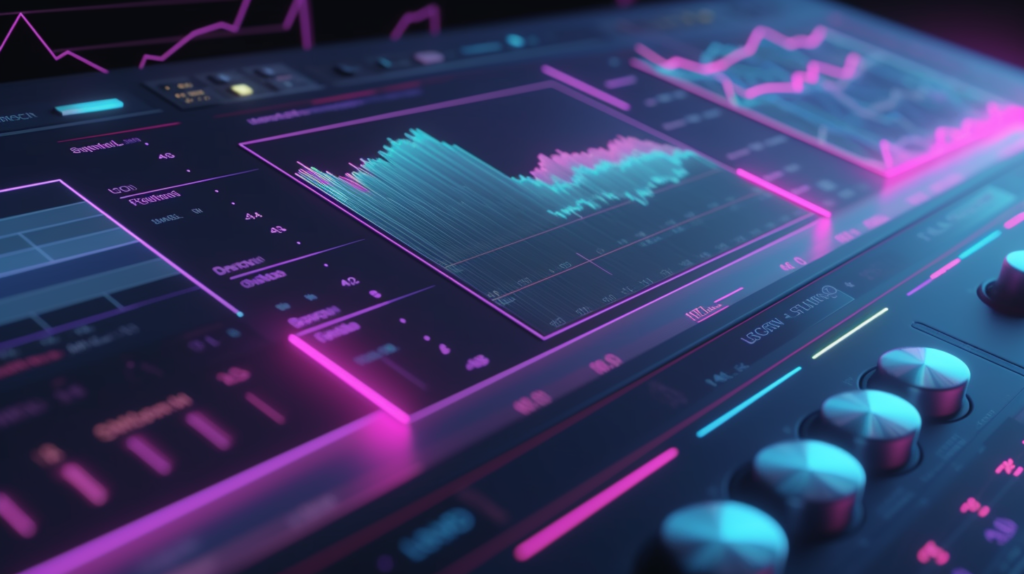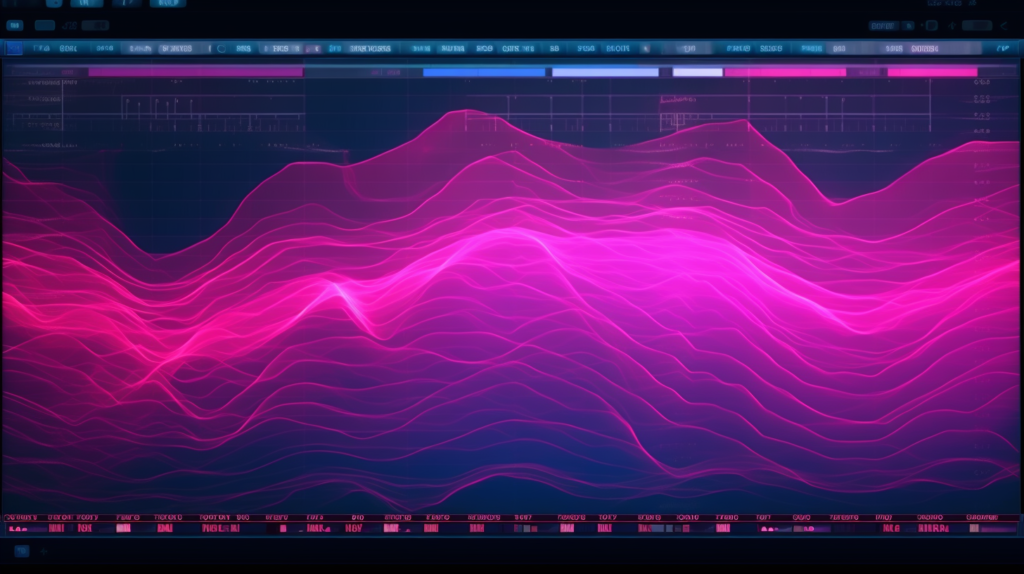Welcome to our definitive guide on limiting and loudness in mastering. Today, we will take an in-depth look at how to achieve a great balance between loudness and clarity in your music production. We will discuss the role of limiting, its impact on dynamic range, and the best practices for using limiters in your mastering process. As a music production professional with over a decade of experience, I’ve written this guide to help you navigate the complex world of audio mastering and make your tracks sound incredible.

Understanding Limiting and Loudness in Mastering
The Role of Limiting in Mastering
Limiting is a crucial process in audio mastering that involves controlling the audio levels to prevent clipping and distortion. A limiter acts as a safeguard, ensuring that the audio does not exceed a certain level, called the threshold. This helps maintain a consistent loudness across the entire track and provides a polished, professional sound.
Loudness and the Loudness Wars
Loudness refers to the perceived volume of a piece of audio. In the music production industry, the “loudness wars” are an ongoing debate about the trade-off between loudness and dynamic range. Over the years, many producers have pushed the limits of loudness, often at the expense of clarity and dynamic range. However, as we will discuss later in this guide, striking the right balance is key to achieving a high-quality master.
In-Depth Look at Dynamic Range Management and Clipping Prevention
The Essence of Dynamic Range in Your Mix
Dynamic range plays a vital role in defining the sonic character of your music. It represents the difference in volume between the loudest and softest parts of your audio, giving your mix depth and space. Maintaining an appropriate dynamic range brings life and emotion to your tracks, allowing each element to shine without overpowering the others. Consequently, understanding how to manage dynamic range effectively is critical when aiming for a balanced and captivating mix during the mastering process.
Strategies for Preserving Dynamic Range
Preserving dynamic range during mastering requires a keen ear and attention to detail. Here are a few strategies to consider when managing dynamic range:
- Gain staging: Establish proper gain staging throughout your mixing process to maintain optimal headroom and prevent clipping. This practice involves setting the levels of individual tracks and groups, ensuring they’re not too hot, and establishing a solid foundation for your mix.
- Compression: Use compression judiciously to tame peaks and control the dynamics of individual elements within your mix. Avoid over-compressing, as this can result in a lifeless and squashed sound.
- Automation: Employ automation for precise control over the levels of different sections in your mix. This can help maintain an appropriate dynamic range while allowing for impactful moments, such as a chorus or a drop.
Recognizing and Avoiding Clipping
Clipping occurs when an audio signal surpasses the maximum level that can be accurately represented, either digitally or analogically. This results in distortion and a loss of audio fidelity. Preventing clipping is crucial for maintaining a clean, professional sound in your final master. By using proper gain staging, compression, and limiting techniques, you can manage the levels of your audio effectively and eliminate clipping.
Delving Deeper into Mastering Plugins and Limiters
Navigating the Mastering Plugin Landscape
With a myriad of mastering plugins available on the market, selecting the right tools for your project can be overwhelming. Each plugin offers a unique set of features, and your choice should be guided by your specific needs and mastering objectives. Consider the following factors when choosing mastering plugins:
- Functionality: Look for plugins that provide a wide range of features, such as equalization, compression, limiting, and stereo imaging, to help you shape the sound of your master.
- Transparency: Opt for plugins that maintain the original character of your mix and minimize coloration, as this ensures a more natural and transparent sound.
- Compatibility: Ensure the plugins you choose are compatible with your digital audio workstation (DAW) and your computer’s operating system.
Expanding Your Limiter Arsenal: Exploring Different Types
Limiters, as specialized mastering tools, are designed to manage audio levels and prevent clipping. There are several types of limiters, each with its unique characteristics and applications. Familiarize yourself with these different categories to make the most informed decisions during the mastering process:
- Peak limiters: These limiters are designed to handle fast transients and short peaks in your audio. They offer a quick response time and can effectively prevent clipping without significantly affecting the overall sound quality.
- RMS limiters: RMS limiters operate by analyzing the average levels of your audio over time. They provide a more gradual approach to limiting, resulting in a smoother and more consistent loudness throughout your track.
- Multiband limiters: These limiters allow you to process different frequency bands independently, offering greater control over the dynamics and tonal balance of your master.
Investing time in understanding the nuances of various mastering plugins and limiters will enable you to make better choices when sculpting
Best Practices for Limiting and Loudness in Mastering
Finding the Sweet Spot Between Loudness and Clarity
The key to achieving a professional-sounding master is finding the perfect balance between loudness and clarity. This means using limiting to boost the overall loudness of your track without crushing the dynamic range or introducing distortion. To do this, start by setting a conservative threshold and gradually increase the gain until you achieve the desired loudness. Always keep an ear on the overall sound quality and adjust as needed to maintain a clear, dynamic mix.
Utilizing True Peak Limiting
True peak limiting is a technique that helps prevent inter-sample clipping, which can occur when an audio signal is converted from digital to analog. Inter-sample clipping can cause distortion and a loss of audio quality, even if your levels appear to be within acceptable limits. By using a true peak limiter, you can ensure that your master stays within the defined threshold and avoid inter-sample clipping issues. Most modern limiters offer true peak limiting options, so be sure to take advantage of this feature.
Monitoring and Metering Your Master
Choosing the Right Monitoring System
An accurate monitoring system is essential for making informed decisions during the mastering process. To ensure that you’re hearing your mix as accurately as possible, invest in a high-quality pair of studio monitors or headphones. Additionally, be mindful of your listening environment and make any necessary adjustments to minimize room reflections and acoustic issues.
Metering Tools for Mastering Success
Metering tools can provide valuable insights into the loudness and dynamic range of your master. Some popular metering tools include the LUFS (Loudness Units Full Scale) meter, RMS (Root Mean Square) meter, and dynamic range meter. By using these tools to analyze your master, you can make informed decisions about the appropriate levels of limiting and loudness to achieve a professional-sounding result.
Cheatsheet for Producers
| Aspect | Tips and Best Practices |
|---|---|
| Limiting | – Use limiting to control audio levels and prevent clipping<br>- Gradually increase the gain to find the right balance between loudness and clarity<br>- Use true peak limiting to avoid inter-sample clipping |
| Loudness | – Aim for a consistent loudness across your entire track<br>- Use metering tools like LUFS and RMS meters to monitor your loudness levels |
| Dynamic Range | – Preserve dynamic range to maintain depth, space, and emotion in your mix<br>- Monitor the dynamic range using tools like dynamic range meters |
| Mastering Plugins | – Choose plugins with precise control over audio levels, versatile limiting options, and transparent sound quality<br>- Experiment with different limiters, such as FabFilter Pro-L 2, Waves L2 Ultramaximizer, and iZotope Ozone Maximizer |
| Monitoring and Metering | – Invest in a high-quality monitoring system, such as studio monitors or headphones<br>- Use metering tools like LUFS, RMS, and dynamic range meters to make informed decisions about limiting and loudness levels<br>- Be mindful of your listening environment and make any necessary adjustments to minimize room reflections and acoustic issues |
By following the tips and best practices outlined in this guide, you’ll be well on your way to mastering the art of limiting and loudness in your music production. Remember, the key to success is finding the perfect balance between loudness and clarity, preserving dynamic range, and using the right tools to achieve a professional-sounding result. Happy mastering!





